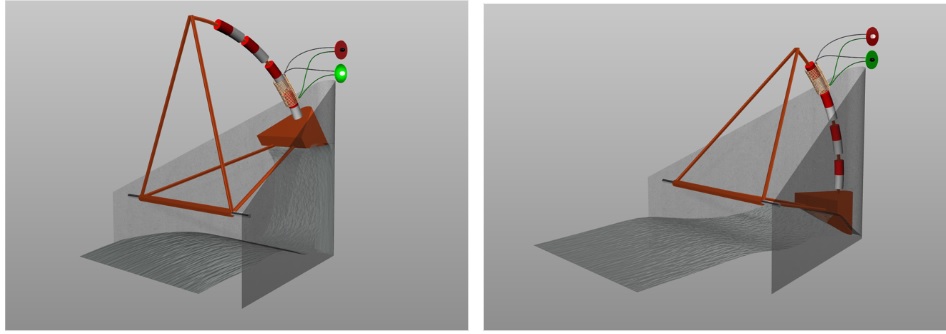Real-time control and validation of a novel rogue wave-energy device
- Academic lead
- Onno Bokhove, Maths
- Industrial lead
- Sean MacCarthy, Hydrotec
- Co-supervisor(s)
- Harvey Thompson, Mech Eng, Duncan Borman, Civil Eng
- Project themes
- Energy and Transport, Environmental Flows, Underpinning Methods for Fluid Dynamics
In August 2013, preliminary tests were undertaken in which a working proof-of-principle was established of the novel wave-energy device, in a 1.2m by 0.2m x 0.2m tank, with a wavemaker, a wave-activated buoy moving in the vertical, and by using deconstructed Faraday/shaking lights to create a linear direct-drive generator. The experiments were built and set-up in The Netherlands by Onno Bokhove together with inventor/ designer Ir. Wout Zweers and was inspired by their bore-soliton-splash. The generated power was visualized using an Arduinoscope (an oscilloscope built using Arduino technology) or LED-lights as loads. No further systematic tests were undertaken, because attention was first directed to establishing a complete mathematical and numerical wave-to-wire model of the set-up, which formulation was finished recently and reported in. This comprehensive model includes the nonlinear water-wave motion, the (constrained) wave-activated buoy motion as well as the electro-magnetic generator; the latter model was derived directly from Maxwell’s equations based on first principles. The device was well-received at EWTEC2019 and EWTEC201 and the experts encouraged further modeling and testing, which is the purpose of the PhD project. The goals of this project are then twofold: (a) to construct a scaled version of the novel wave-energy device in our wavetank and perform tests with (ir)regular waves; and, (b) develop real-time control by experimental and computational means to optimize the energy harvest.

Fig. 1. Sketches of the new wave-energy device.
